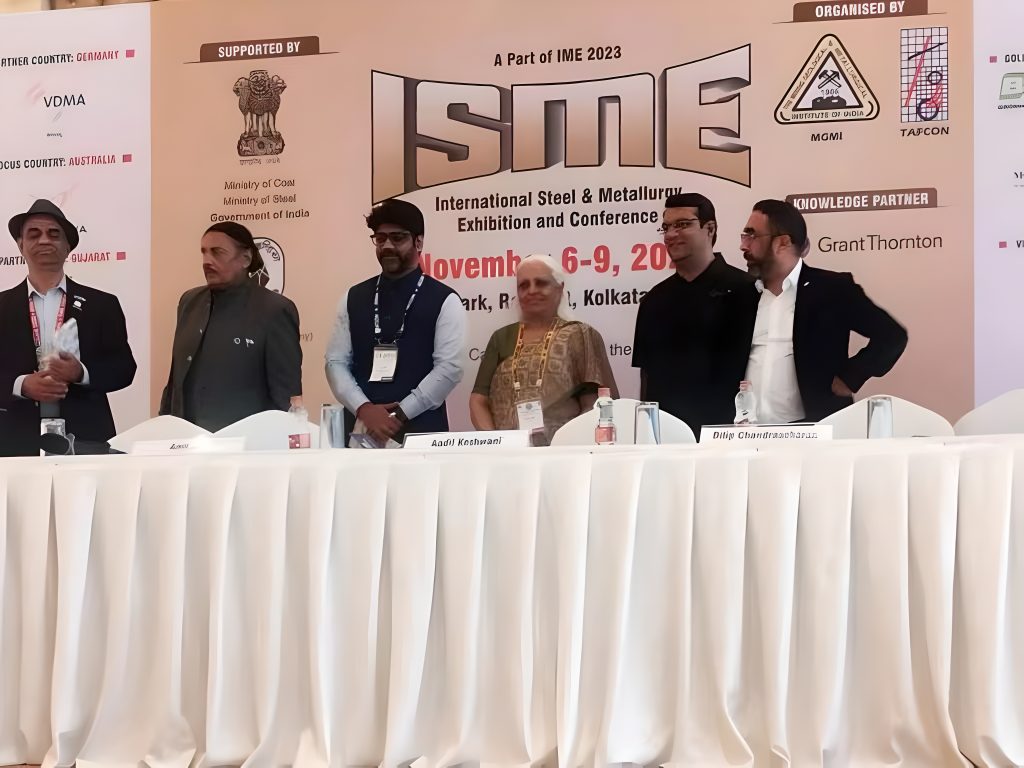Preamble: This paper discusses the Theme and Technical Highlights of all the past International Coal Preparation Congress commencing 1950 till 2023. Indeed, it covers the historic development in the field of coal preparation technology. ICPC’s objective is to provide a forum where coal preparation technologists from around the world can meet on a four-year frequency and exchange ideas and technologies. ICPC Events in Chronological Order: Year of ICPC Hosting Country Theme of ICPC Highlights of Outcome of ICPC I- ICPC 1950 Paris, France. Definition of Process Efficiency on Scientific Basis. • Tromp Curve by Tromp.• Ecart Probable Error and Imperfection Factor by Terra. II- ICPC 1954 Essen, Germany. Jigging and Cleaning of Fines. • Tacub Jig.• Batac Jig.• Sieve Bend by DSM.• Pressure Filter.• Froth Flotation. III-ICPC 1958 Liege, Belgium. Various Process employed for cleaning small coal. • Dry Cleaning of small coal.• Standard Method of Filtration for tailing disposal.• Automation of Coal Preparation Plants. IV-ICPC 1962 Harrogate UK. Defining Washability Characteristic through Indices.Treatment of coal fines and improved method of dewatering of froth concentrate and tailing. • CFRI Dhanbad (India) presented first-time. Washability Indices as a means of classifying coals as to their ease of cleaning.• Vacuum Filtration.• Filter Presses of larger size.• Deep Cone Thickener.• Application of radioactive isotopes for Baum Jig bed control and Ash Monitor. V- ICPC 1966 Pittsburgh, USA. A significant strength of coalin the United States by increased productivity. Legislation relating to Environment. • Electronic Coal Separator Utilising X-rays.• Froth Flotation and Automation.• Multidune Separator.• Automation of Jigs and Heavy Media Systems.• Centralized Control System of washery.• OSO Sieve.• Rapped Sieve Bends. VI- ICPC 1973 Paris, France. Coal preparation and utilization of waste. • Utilization of collierydiscard.• Flotation cell design.• Oil agglomeration.• Flip-flop screens.• Centrifuges. VII- ICPC 1976 Sydney, Australia. Problem of Beneficiation ofsmall coal and reducing the moisture content of small coals. • Beneficiation of fines byoil agglomeration.• Flotation column.• Triboelectric Cyclone Separator.• Shell Pelletizing System.• Jet-CycIo Cell.• Biological Leaching Techniques for reduction of sulfur in coal. VIII- ICPC 1979 Donetsk, USSR New Techniques andTechnology for Coal Preparation. • Flotation Cell Impellerand Diffuser Design.• Mini-micro-Computer for complete plant.• Solid Bowl Centrifuges.• Continuous Belt Press.• Two Stage Flotation.• High-capacity Thickeners with Lamella Plates. IX- ICPC 1982 New Delhi, India. The Preparation of DifficultCoal. • Influence of CycloneDiameter on Separating Performance.• Application of HGMS in Coal Preparation.• Optimization and Control in coal Preparation.• Beneficiation of Non-Coking Coal for power generation in India. X- ICPC 1986 Edmonton, Canada. Cleaning of Small & FinesCoal. • Process Control andOptimization.• New Developments for Improved Operation.• Optimum Cleaning of Thermal Coal.• Dewatering, Disposal and Utilization of Plant Discard. XI -I CPC 1990 Tokyo, Japan Advanced Coal Preparationfor the 1090s and beyond. • Recent Trends in Coal Preparation Technology.• Process Monitoring, Control and Optimization.• Innovation in Coal Cleaning Technology• Innovation in Flotation Technology.• Production of Ultra-Clean Coal. XII- ICPC 1994 Krakow, Poland New Trend in Coal Preparation Technology &Equipment. • Vibrational grinding ofbrown coal and anthracite.• Removal of Ash and Sulphur by Advanced Physical, Chemical, and Biological Methods.• Three Product Dense Medium Cyclone.• On-line determination of Moisture, Ash, and Ballast Content and the thermal value of coal.• Beneficiation of Difficult- -To- Wash Coals. XIII- ICPC 1996 Brisbane, Australia Best practices inInternational Coal Preparation. • Rational coal preparation Flow Sheet.• Beneficiation of thermal coal in India — Issues and Options.• Development of large capacity dense medium cyclone circuits.• Dynamics of a teetered bed separator.• Use of spiral separators in coal preparation.• Pneumatic flotation machines. XIV- ICPC 2002 Sandston, South Africa. Current Development inCoal Preparation Technology. • ROM Jigs to de-shalethe plant feed.• Application ROM Jig first time in South Africa.• Tri-FIo Separator.• Hydrosizers and Teeter Bed Separators.• Ring Granulators for crushing coal. XV -ICPC 2006 Beijing, China. Designing for the Environment. • Coal Preparation and Environment.• Coal Plant Design and Construction.• Dense Medium and other Gravity Separation.• Dry Separation.• Monitoring and Automatic Control. XVI- ICPC 2010 Lexington, USA. Opportunity to be exposedto how coal preparation and coal quality are addressed around the world. • Analysis of ProcessingBeing Widely Used for Cleaning of Thermal Coal• Delineation of Large Diameter Dense Medium Cyclone Performance.• Super-Large Gravity-Fed Three- Product Heavy Medium Cyclone.• A Novel Approach for Improved Column Flotation of Fines and Coarse Coal.• New Development of Modular Coal Preparation Plant Design. XVII-ICPC 2013 Istanbul, Turkey. Advance coal cleaningtechnology. Carbon trade and Management. • Large Diameter DenseMedium Cyclone Performance in low Density/ High Near Gravity Environment.• New Generation of Coal Cleaning Equipment• Application of Belt Press for tailing dewatering• Cutting the cost of Coal line Preparation in spiral Separators. XVIII-ICPC 2016 Saint-Petersburg, Russia. To assist scientific and technological cooperation for the benefits of achieving progress in coal preparation and to find solutions to environmental issues, directly correlating with the strategic program of development of coal industries. • Developments in washability predictions using CGA.• Technologies in use for the processing of fine coal.• Dense Medium Bath and Drum Separators- a revaluation of their role in modern coal preparation plants.• Optimal utilization of Dense Medium Cyclones.• Design of coal Preparation Plants- Problems and Solutions.• Dry coal separation. XIX-ICPC 2019 New Delhi, India. All aspects of Coal Processing and Coal Gasification • Developments in coal to chemicals.• Emerging uses of coal through its conversion into high value.• Low polluting energy and Petro-substitute XX-ICPC 2023 Australia To produce power at a significantly lower level of greenhouse emission. • Developments in coarse coal processing.• Fine coal beneficiation• Dewatering of fine products. Dry Beneficiation The above Congresses have been rewarding technically and culturally. The International Organizing Committee (IOC) determined that the Congress will be held on a four-year frequency. The members of the IOC are either representatives of their country’s coal preparation society or government entities related to the coal industry. References: 1. Coal Preparation and Use- A World Review- S. Ranga Raja Rao. 2. Technical Papers 9th International Coal Preparation Congress, New Delhi 3. Coal and Coal Preparation in South Africa- A 2002 review. 4. XVI International



